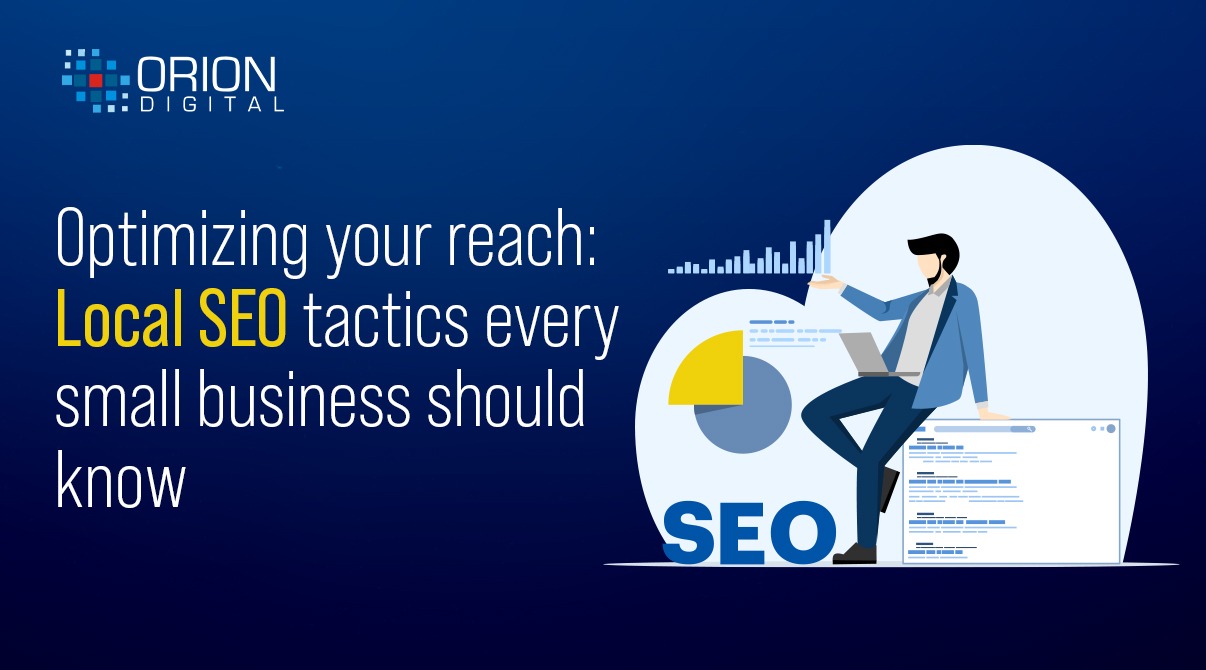Grow your reach with support from a marketing agency for small business
Grow your reach with support from a marketing agency for small business
Blog Article
Exactly How Reliable Web Style Can Improve Your Search Engine Optimization Approach and Improve User Experience
The crossway of efficient internet style and search engine optimization is an essential area for any type of service looking for to boost its on the internet visibility. An instinctive style not just raises user experience yet likewise considerably affects Search engine optimization performance by reducing bounce prices and enhancing involvement metrics.
Value of Website Design for SEO
Reliable website design is often ignored in its effect on seo (SEO) A well-structured web site not only improves user experience yet likewise plays an essential duty in how internet search engine place pages. Online search engine like Google prefer websites that display clear navigation, quick filling times, and mobile responsiveness. These elements add to lower bounce rates and greater user interaction, which are critical metrics for SEO success.
In addition, website design components such as tidy code, optimized pictures, and appropriate use HTML tags significantly influence a website's crawlability. Look engines rely on structured data to recognize internet site content and context, making it vital for internet developers to implement best practices. Furthermore, the combination of search engine optimization approaches within the design phase, such as including keyword phrases in titles, meta summaries, and alt message for photos, can boost presence in search outcomes.
Inevitably, focusing on reliable internet layout not just makes certain a smooth customer experience yet additionally develops a strong foundation for SEO efforts, causing boosted natural web traffic and enhanced rankings. Thus, businesses have to identify the inherent link between internet style and SEO to attain online success.
Trick Style Elements for Customer Experience
Individual experience (UX) functions as a keystone for successful internet style, influencing how site visitors communicate with a website and view its worth. To enhance UX, numerous crucial design components should be prioritized.
First of all, intuitive navigating is important; a well-structured food selection and clear pathways permit individuals to find info swiftly, decreasing disappointment. Aesthetic hierarchy plays a critical role, assisting customers' attention to crucial components through shade, dimension, and positioning. This assists in quicker decision-making and boosts total engagement.
Furthermore, a constant layout style improves familiarity and trust, as customers feel a lot more comfy browsing a website that aesthetically straightens throughout its pages. Reliable usage of white space also can not be neglected; it avoids mess, permitting important content to stand out and making the site much more digestible.
Additionally, premium pictures and graphics are crucial, as they not just catch interest however additionally share expertise. Fast lots times are non-negotiable; delays can lead to higher bounce rates and diminished individual fulfillment. By concentrating on these essential design components, organizations can substantially improve their user experience, cultivating favorable interactions that encourage return visits and conversions.
Mobile Responsiveness and Search Engine Optimization Effect
As website design significantly prioritizes user experience, the importance of mobile responsiveness can not be overemphasized. With a considerable portion of internet traffic stemming from mobile phones, a responsive layout guarantees that websites are obtainable and useful across numerous screen dimensions. This versatility not just boosts individual complete satisfaction however also plays an essential role in search engine optimization (SEARCH ENGINE OPTIMIZATION)

Incorporating mobile responsiveness into web style likewise promotes enhanced packing times, which is a vital consider both customer experience and search engine optimization positions. Slow-loading web pages hinder individuals, resulting in higher abandonment rates and negatively impacting search visibility. Ultimately, prioritizing mobile responsiveness not just boosts customer engagement however also strengthens an internet site's search engine optimization technique, creating a much more affordable online presence.
Site Structure and Navigating Ideal Practices
An efficient site structure and instinctive navigating are necessary elements of successful website design. They not just improve user experience but additionally play an essential duty in search engine optimization (SEO) A clear hierarchy permits customers and internet search engine his response to comprehend the relationships in between various pages, boosting the general usability of the website.
Usage keyword-rich and detailed URLs, as they give context and improve search presence. This reduces bounce prices and maintains individuals involved.

Measuring the Success of Web Style
Determining the success of website design includes assessing different metrics that show individual involvement and total website performance. Secret performance indicators (KPIs) such as bounce price, typical session duration, and web pages per session offer click here for more insight into how individuals engage with the website. A high bounce price might suggest that individuals are not discovering the material appealing or appropriate, prompting a need for design or content alterations.
Furthermore, conversion prices are critical for analyzing the performance of website design. A boost in conversions, whether through form entries, item purchases, or e-newsletter sign-ups, often associates with instinctive style and user-centered performances. Tools like Google Analytics can give thorough records on these metrics, allowing designers to recognize patterns and areas for renovation.
Inevitably, a mix of quantitative data and qualitative responses establishes a detailed picture of web layout success, ensuring that it lines up with both Search engine optimization objectives and individual assumptions. By regularly gauging these factors, services can improve their web style approaches to optimize user experience and drive significant involvement.
Conclusion

As web layout progressively prioritizes customer experience, the significance of mobile responsiveness can not be overstated.Including mobile responsiveness into internet style also promotes better packing times, which is a key factor in both customer experience and SEO positions. Ultimately, a mix of quantitative information and qualitative feedback develops a comprehensive image of web style success, making sure that it aligns with both SEO purposes and individual assumptions. By regularly gauging these elements, services can refine their web layout techniques to maximize individual experience and drive meaningful interaction.
In verdict, effective web layout significantly enhances SEO methods and individual experience.
Report this page